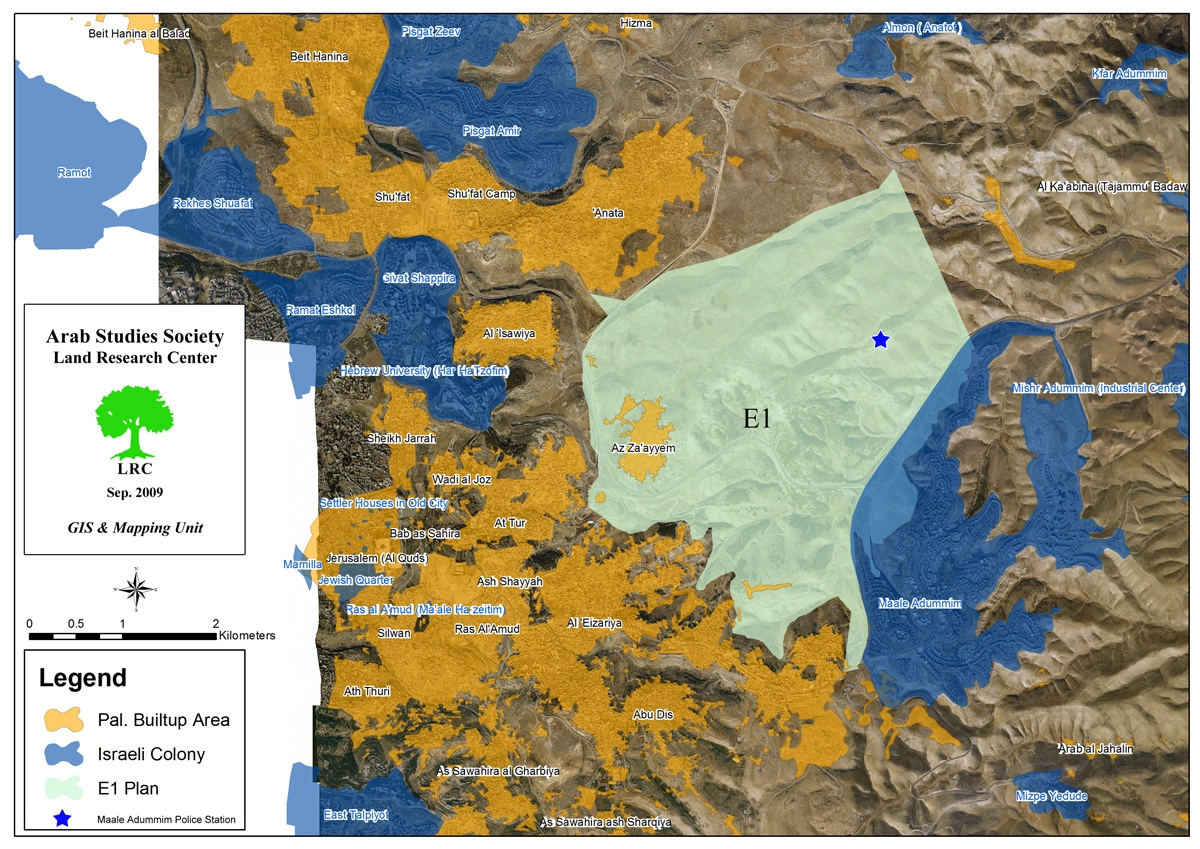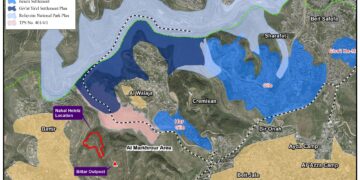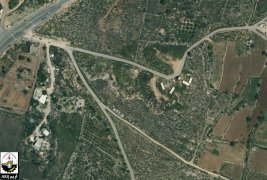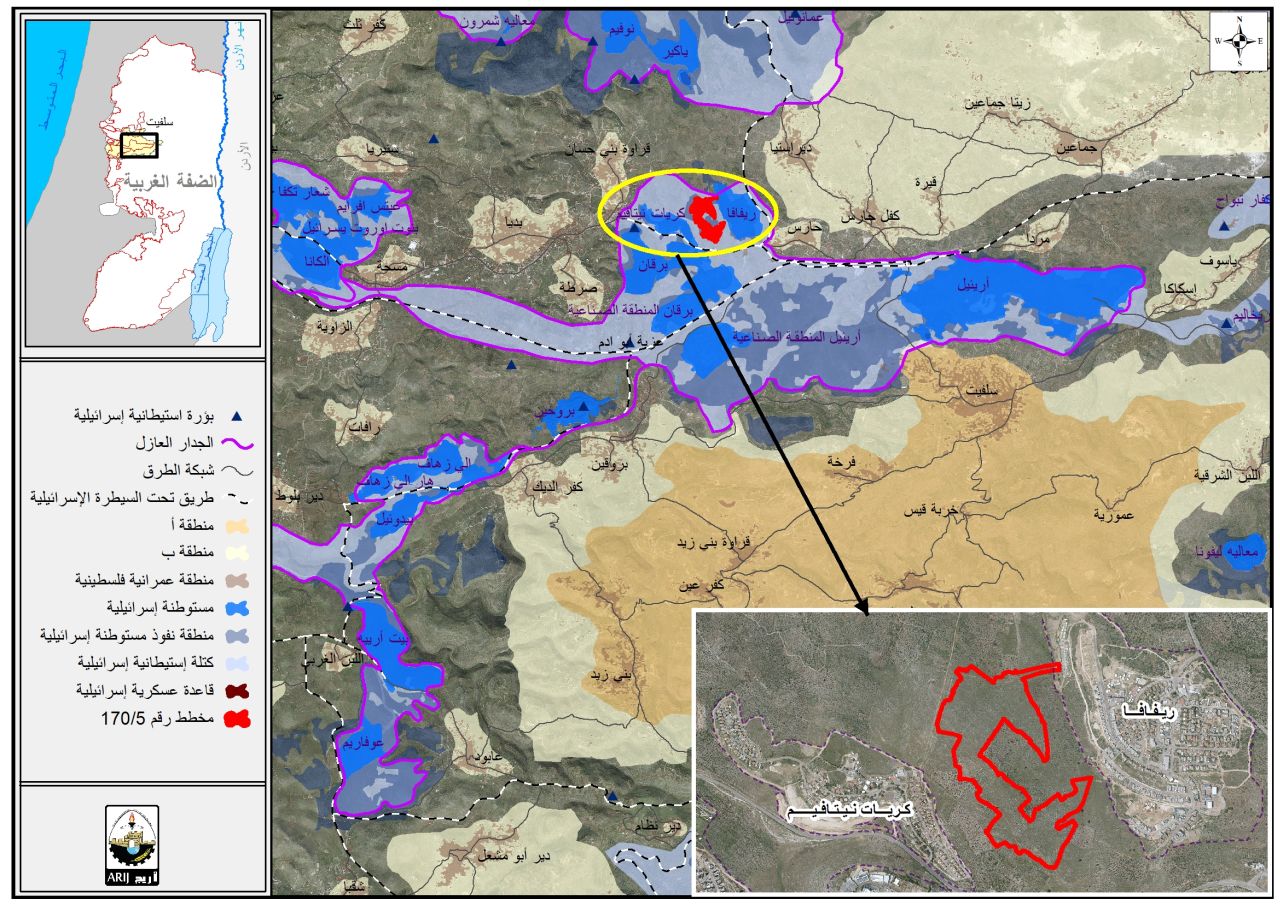On the 7th of September, 2009, Israeli ministers and MKs inaugurated the cornerstone of a new colonial neighborhood atop lands confiscated by the Israeli occupation from the Palestinian towns of Al Tur, Anata and Al Izzariya. The 12,500 confiscated dunums were annexed earlier into the colony of Ma’ale Adumim and became to be known as the E1 Plan.
The first phase of the new planned colony consists of building 450 colonial units in which 21,000 Israeli colonists are planning to live. The overall plan for the colony of Mesfarat Adumim calls for the construction of 2500 colonial unit. Currently, the new construction is being depicted as part of the on-going expansion of the colony of Ma’ale Adumin (i.e. not as a separate new colony).
Politically speaking, in case the new construction is allowed to proceed, it will lead to the cutting of the geographical and demographical contiguity between the southern and northern parts of the West Bank while totally isolating East Jerusalem from its West Bank hinterland. This discontinuity would, in turn, prevent the creation of a viable Palestinian state as advocated for by national and international parties.
The inauguration ceremony was symbolic of the continued work on the E1 Plan as participants buried a jar containing some papers near the police station which was established in 2008 as part of the Plan. It has to be said that, overall, the Plan calls for the establishment of 3500 colonial housing units, an industrial zone in addition to more than 12,000 hotel rooms. The ceremony comes amid a wave of renewed official and non-official colonial campaign confronting the weak American and international pressure trying to force Israel to freeze its colonial activities as a prelude to go back to the negotiation table.
Ma’ale Adumim:
The colony was established in 1972 at the expense of lands of the Palestinian town s of Al Issawiya, Al Sawahra Al Sharqiya and Al Izzariya. According to the Israeli Bureau of Statistics, the population of the colony in the year 2007 was 27,259 colonists living in a built-up area of 5,869 dunums.
Israeli Occupation Authorities Annexes 12,000 Dunums (including Qedar Colony) to Ma’ale Adumim:
At the end of April 2009 Israeli occupation authorities issued a decision to annex 12,000 dunums to the municipal boundaries of the colony of Ma’ale Adumim. In effect, this decision annexes the old and new sections of the colony of Qedar into the bigger colony of Ma’ale Adumim. The lands between the two colonies will be used to construct about 6,000 colonial units which would ensure building continuity between the two colonies. On the 8th of May, 2009, the Israeli Minister of Defense ratified the decision. See Map 1
The decision to annex the colony of Qedar into Ma’ale Adumim (rather than into the Gush Etzion as was proposed in the past) aims at achieving a number of goals including:
-
The enlargement of Jerusalem in the southeastern direction while adding 12,000 dunums that can be used to add more Israeli colonists which can play a decisive role in the demographical balance in the city;
-
The creation of “Greater Jerusalem” with a Palestinian population that does not exceed 22% of the total population of the City;
-
The prevention of any geographical contiguity between the southern and northern parts of the West Bank due the creation of a 15-20 kilometer wedge in the heart of the West Bank.
-
The re-routing of “Fabric of Life” road connecting between the south and the north of the West Bank eastward to Jericho. In turn, this would mean that reaching the north from the south (and vise versa) would take longer time than the current Wadi Al Nar route.
-
The isolation and siege of the Palestinian towns of Al Izzariya, Abu Dis and Al Sawahra which form a natural Palestinian extension of the Holy City of Jerusalem. This isolation aborts the idea of developing these towns to become part of the “One City: Two Capitals” phenomenon talked about during the Oslo era.
Prepared by:
The Land Research Center
LRC
















